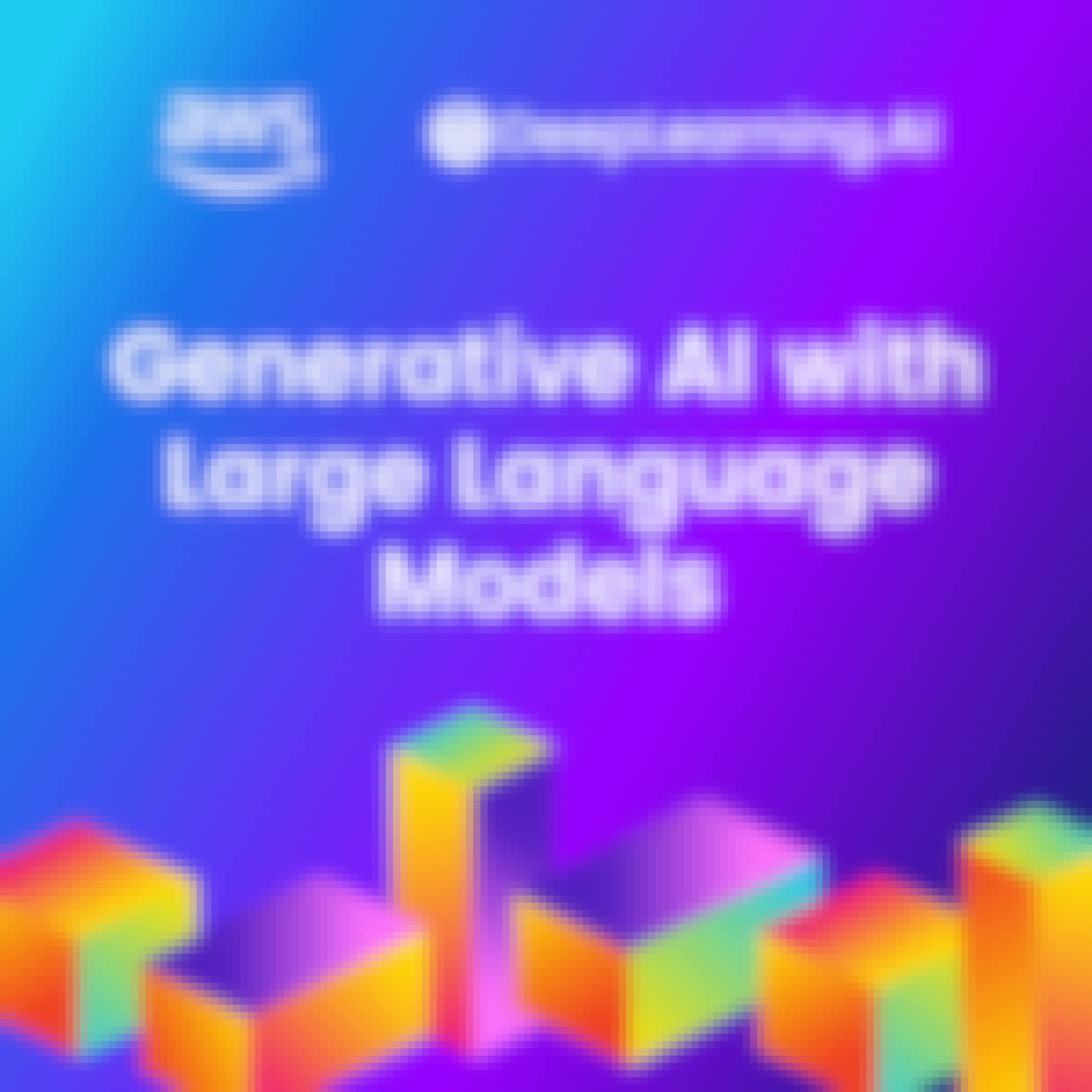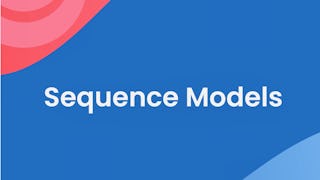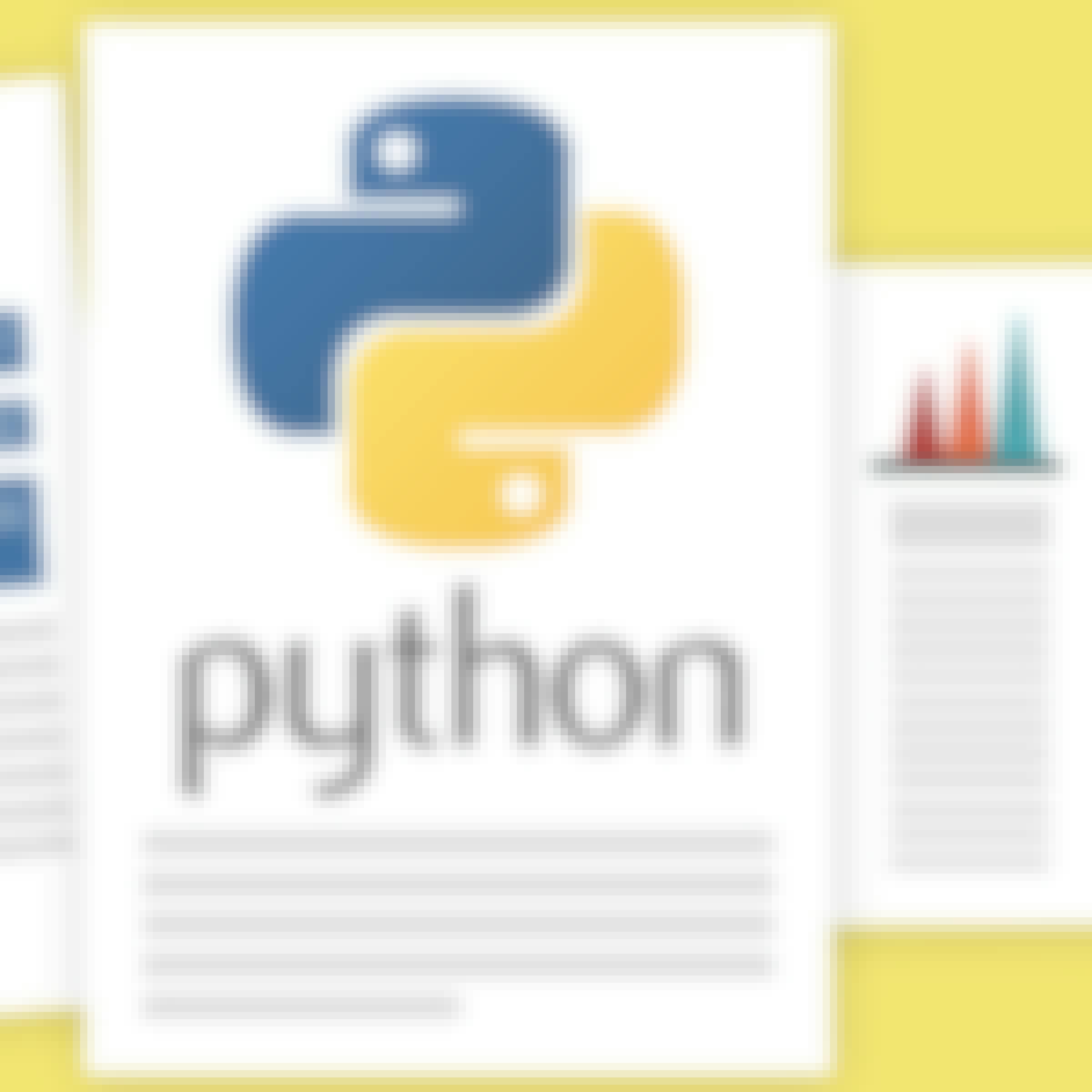Filter by
SubjectRequired
LanguageRequired
The language used throughout the course, in both instruction and assessments.
Learning ProductRequired
LevelRequired
DurationRequired
SkillsRequired
SubtitlesRequired
EducatorRequired
Explore the Probabilistic Graphical Models Course Catalog

DeepLearning.AI
Skills you'll gain: Generative AI, Large Language Modeling, OpenAI, ChatGPT, Prompt Engineering, PyTorch (Machine Learning Library), Artificial Intelligence and Machine Learning (AI/ML), Deep Learning, Tensorflow, Applied Machine Learning, Scalability, Natural Language Processing, Application Deployment, Reinforcement Learning, Performance Tuning, Performance Metric
 Status: Free Trial
Status: Free TrialJohns Hopkins University
Skills you'll gain: Shiny (R Package), Rmarkdown, Exploratory Data Analysis, Regression Analysis, Leaflet (Software), Version Control, Statistical Analysis, R Programming, Data Manipulation, Data Cleansing, Data Science, Statistical Inference, Predictive Modeling, Statistical Hypothesis Testing, Data Wrangling, Data Visualization, Plotly, Machine Learning Algorithms, Plot (Graphics), Knitr
 Status: Free Trial
Status: Free TrialSkills you'll gain: Package and Software Management, File Systems, Microsoft Windows, Desktop Support, Linux, Operating Systems, OS Process Management, Linux Administration, Remote Access Systems, System Monitoring, Command-Line Interface, User Accounts, Systems Administration, Technical Support and Services, File Management, Linux Commands, Software Installation, Identity and Access Management, Authorization (Computing), Virtualization

Stanford University
Skills you'll gain: Game Theory, Strategic Decision-Making, Mathematical Modeling, Graph Theory, Bayesian Statistics, Behavioral Economics, Probability, Economics, Markov Model, Algorithms
 Status: Free Trial
Status: Free TrialSkills you'll gain: Prompt Engineering, Generative AI, Large Language Modeling, ChatGPT, Data Ethics, OpenAI, Artificial Intelligence, Software Development Tools, Software Testing, Test Automation, Software Development, DevSecOps, Application Security, CI/CD, Natural Language Processing, Code Review, Program Development, Software Architecture, Content Creation, Image Analysis
 Status: Free Trial
Status: Free TrialDeepLearning.AI
Skills you'll gain: Natural Language Processing, Artificial Neural Networks, Tensorflow, Large Language Modeling, Artificial Intelligence and Machine Learning (AI/ML), PyTorch (Machine Learning Library), Deep Learning, Applied Machine Learning
 Status: Free Trial
Status: Free TrialSkills you'll gain: SQL, Jupyter, Data Literacy, Data Mining, Peer Review, Data Modeling, Databases, Stored Procedure, Relational Databases, Database Design, Query Languages, Data Science, Database Management, Big Data, Data Cleansing, Data Visualization Software, GitHub, Business Analysis, Cloud Computing, Data Analysis
 Status: Free Trial
Status: Free TrialSkills you'll gain: Predictive Modeling, Exploratory Data Analysis, Data Wrangling, Data Analysis, Data Import/Export, Pandas (Python Package), Statistical Modeling, Data-Driven Decision-Making, Data Manipulation, Scikit Learn (Machine Learning Library), Regression Analysis, Feature Engineering, Matplotlib, Data Cleansing, NumPy, Descriptive Statistics, Supervised Learning, Data Pipelines
 Status: Free Trial
Status: Free TrialSkills you'll gain: Prompt Engineering, Generative AI, ChatGPT, Data Storytelling, OpenAI, Analytics, Data Analysis, Artificial Intelligence and Machine Learning (AI/ML), Dashboard, Large Language Modeling, Data Ethics, Artificial Intelligence, Program Development, Data Visualization Software, SQL, Python Programming, Query Languages, Content Creation, Image Analysis, Virtual Environment
 Status: Free Trial
Status: Free TrialJohns Hopkins University
Skills you'll gain: Rmarkdown, Exploratory Data Analysis, Version Control, Statistical Analysis, R Programming, Data Manipulation, Data Cleansing, Data Science, Data Wrangling, Data Visualization, Plot (Graphics), Statistical Programming, Ggplot2, Big Data, Git (Version Control System), Data Integration, Knitr, Data Analysis, Data Sharing, Statistical Reporting
 Status: Free Trial
Status: Free TrialVanderbilt University
Skills you'll gain: Prompt Engineering, ChatGPT, Ideation, Verification And Validation, Data Validation, Data Presentation, Productivity, Generative AI, Document Management, Data Synthesis, Image Analysis, Data Capture, Artificial Intelligence, OpenAI, Large Language Modeling, Data Analysis, Organizational Skills, Risk Management Framework, Computer Vision, Microsoft Excel

Stanford University
Skills you'll gain: Network Analysis, Network Model, Social Sciences, Sociology, Economics, Policy, and Social Studies, Game Theory, Behavioral Economics, Graph Theory, Mathematical Modeling, Markov Model, Probability & Statistics, Probability Distribution, Bayesian Statistics, Simulations
Probabilistic Graphical Models learners also search
In summary, here are 10 of our most popular probabilistic graphical models courses
- Generative AI with Large Language Models: DeepLearning.AI
- Data Science: Johns Hopkins University
- Operating Systems and You: Becoming a Power User: Google
- Game Theory: Stanford University
- Generative AI for Software Developers: IBM
- Sequence Models: DeepLearning.AI
- Introduction to Data Science: IBM
- Data Analysis with Python: IBM
- Generative AI for Data Analysts: IBM
- Data Science: Foundations using R: Johns Hopkins University










